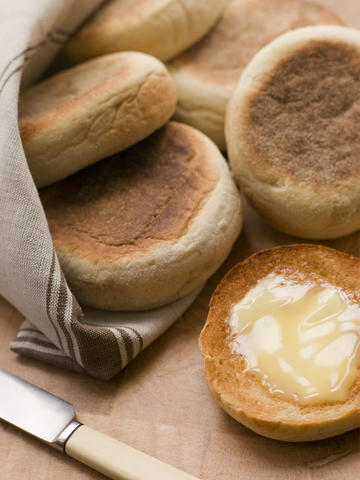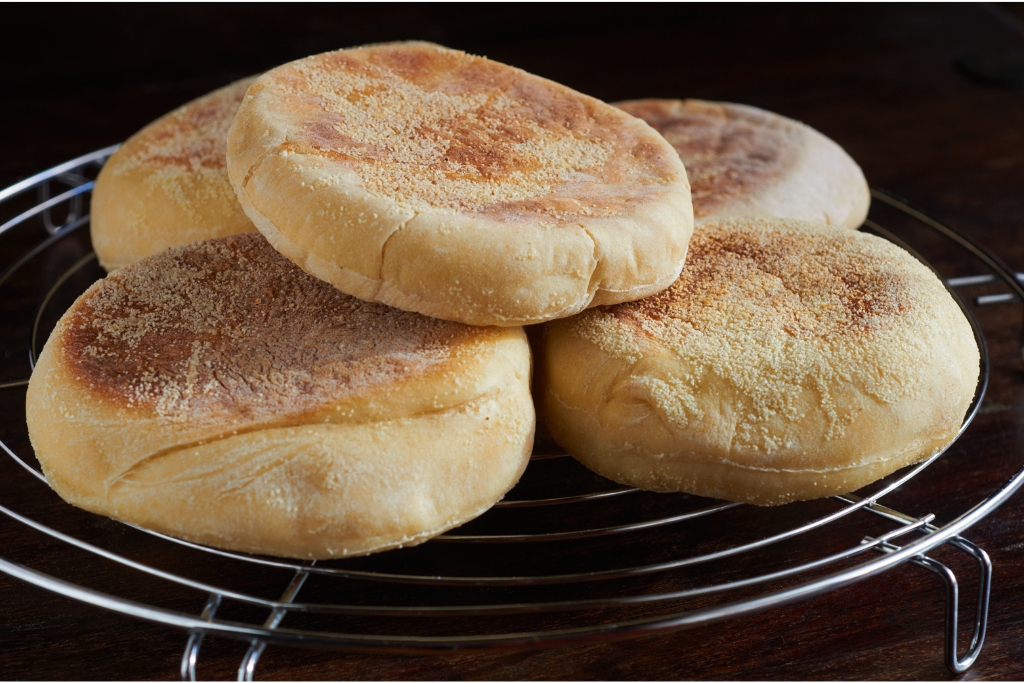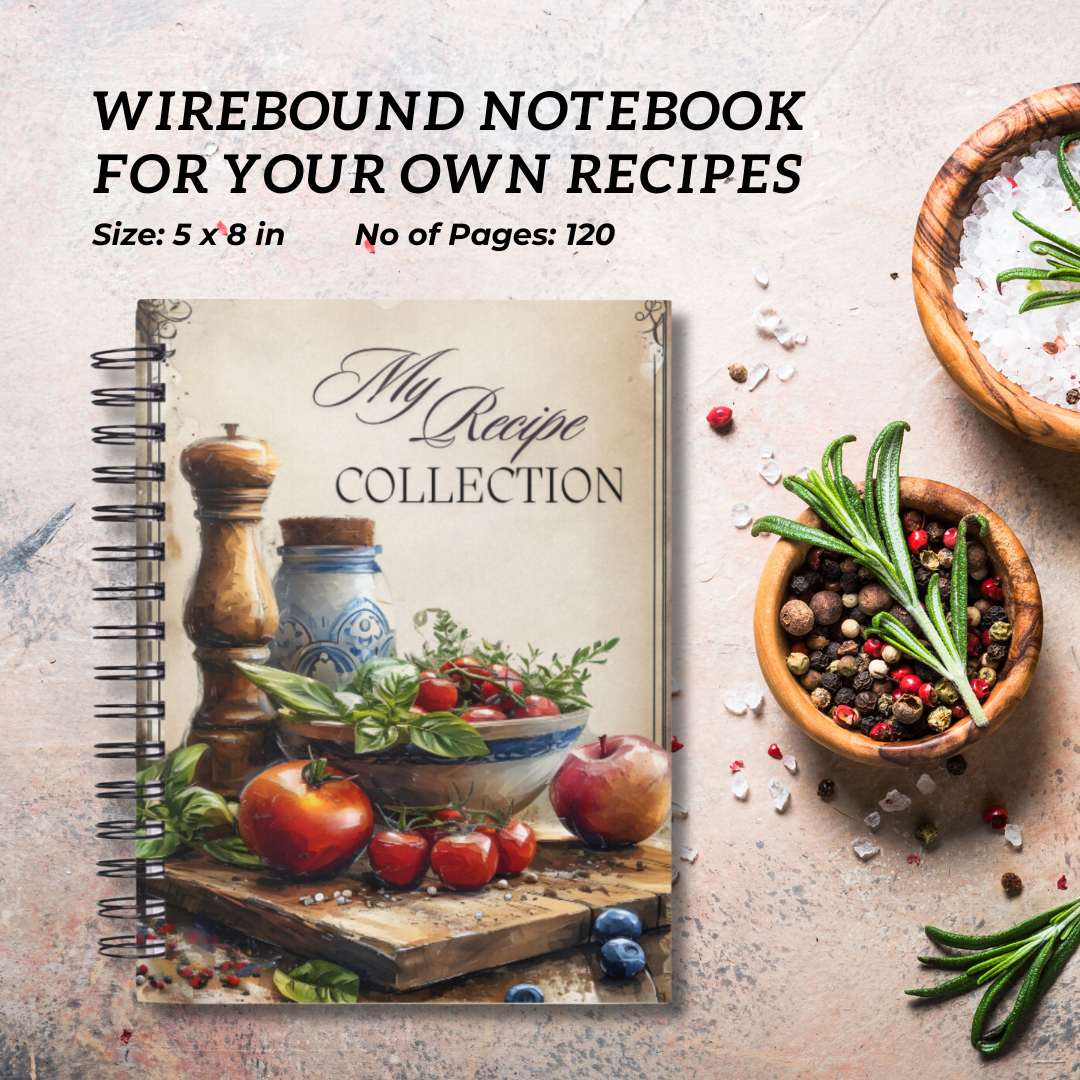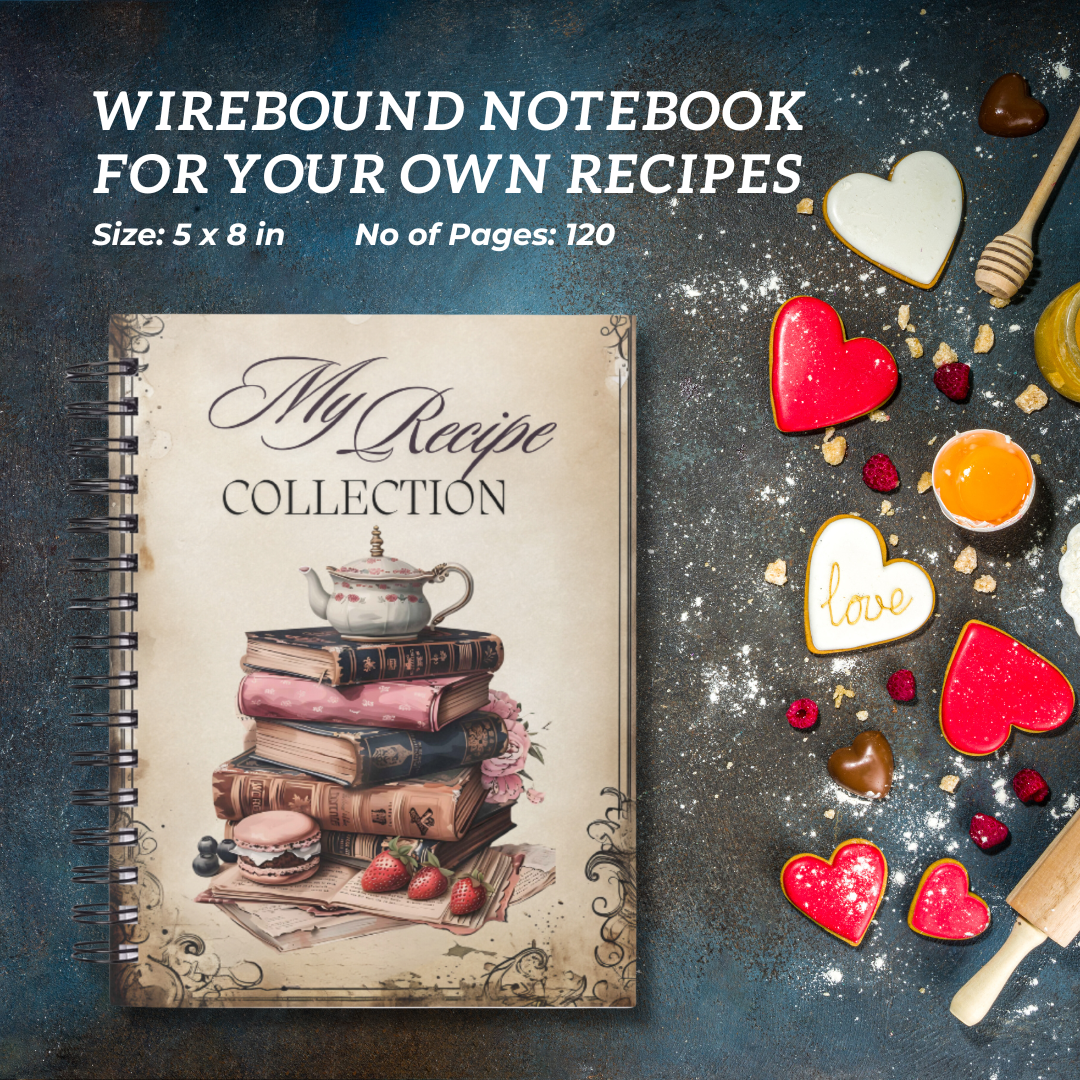English Muffins
English muffins bear absolutely no resemblance to their American namesakes. They're not a cake, but a form of leavened bread roll, cooked on a griddle. Doesn't mean they're not totally yummy and moreish, though...
If you've ever tried your hand at making bread, you'll easily be able to make these traditional teatime treats. All you need are the usual bread-making ingredients, but - different from bread - the risen dough is cooked on a griddle.
Traditionally, the muffins are then split round the middle and served with lots of ice-cold butter and a pot of tea.
But they also make a marvellous base for scrambled eggs and smoked salmon or poached eggs with warm Hollandaise sauce. (You may know the latter as Eggs Benedict.) So go ahead, make some muffins and find out how you like to eat them best....
Ingredients
- 8 fl oz (200 ml) milk
- 2 fl oz (50 ml) water
- 1 lb (450 g) plain flour or bread flour
- 1 teaspoon salt
- 1 teaspoon caster sugar
- 2 teaspoons dried yeast
- 2 oz (50 g) lard
How to Make English Muffins
 English Muffins
English Muffins © Monkey Business Images | dreamstime.com
Just as if you're making bread by hand, start by warming the water and milk until hand-hot. You can do this in the microwave or in a small pot on the stove.
When the liquid is warm, add the sugar and yeast and mix in well. Then leave it to stand until frothy - this will take about 10-15 minutes, depending on how warm your kitchen is.
Meanwhile, sift the flour and salt into a bowl.
Make a well in the centre and when the yeast is ready, mix the liquid into the flour. Using a spoon and later your hands, mix the ingredients to a soft dough. It's the right consistency if it leaves the bowl clean.
Add a little flour if the mix is too sticky, or a little more water if it seems dry.
Now turn out the dough onto a flat work surface and knead it for 10 minutes. Give it some elbow-grease and it will turn out beautifully smooth and elastic.
Place the kneaded dough back into the bowl and put the bowl into a warm place, covered with a damp dishcloth. Leave it to rise until doubled in size. 30-45 minutes, depending on how warm your kitchen is.
Then turn the dough out onto a floured surface and roll it out to the thickness of a finger - about 1 cm or so. Use a large cookie cutter or English Muffin Rings to shape the dough into rounds.
You should get about 12 muffins.
 English Muffins © Nouk | Getty Images canva.com
English Muffins © Nouk | Getty Images canva.comPlace them onto a lightly floured baking sheet and leave to rise again in a warm place for 25-30 minutes.
Now it's time to cook - not bake - your muffins.
Heat a thick-bottomed, heavy frying pan or griddle over a medium heat. Add a little lard - butter won't work here, because it will burn before you're finished cooking the muffins.
Put in some muffins - as they are or in a ring if you like that better - and turn the heat down low. Cook them until nice and golden. The muffins will take about 6-8 minutes on each side.
Keep them warm while you cook the rest and then enjoy with plenty of fridge-cold butter and a pot of tea!
Cheats
If you've never made bread or the idea of kneadig dough for 10 minutes has you break out in a sweat, you can make the dough in a breadmaker.
I have a Panasonic Bread Maker and it works fine if you choose the 'dough' setting. Just tip everything in and let the machine do the work. Make sure you use dried yeast that's suitable for breadmakers - it does not need to be mixed with milk and frothed beforehand.
Once the dough is mixed and risen, tip it out onto a lightly floured work surface. Roll out and cook as described above.
Regardless of how you make yours - English muffins are truly delicious. They're versatile too, fitting in nicely anywhere between breakfast and supper. So what are you waiting for - go make some!
How do you keep your recipes?
Are you a passionate cook or baker with a treasure trove of old, beloved recipes scattered around your kitchen? Let me help you organise and preserve your culinary heritage in style.
These elegantly designed blank recipe notebooks don't take up much room, but with their user-friendly layout and durable design, they offer plenty of space for your recipe collection. This recipe keeper notebook is your perfect kitchen companion. And filled with their favourite recipes it makes a great gift for children heading to college - or even as a wedding gift.
Return from English Muffins to the recipes page for more traditional treats.



